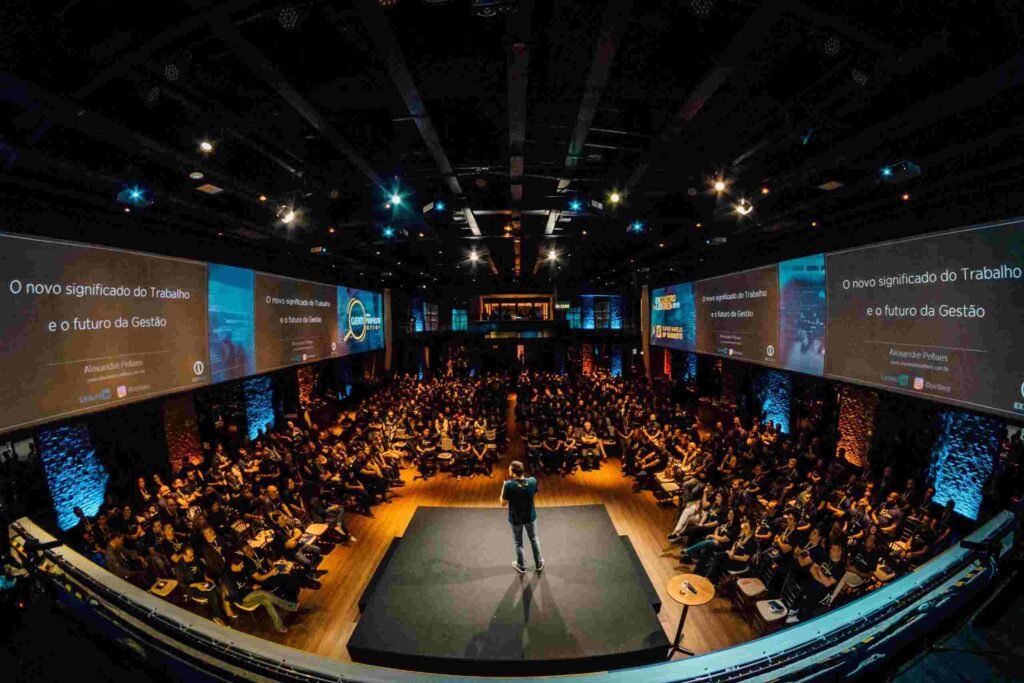August is a vibrant month filled with opportunities to boost your marketing efforts. With summer in full swing and many people enjoying vacations and outdoor activities, it’s the perfect time to engage your audience with creative and impactful campaigns. Whether you’re looking to increase brand awareness, drive sales, or build customer loyalty, here are some hot marketing ideas to try this August.
Embrace Summer Themes
Embracing summer themes in your marketing strategy can create a vibrant and engaging experience for your audience. For startup founders, strategically leveraging the seasonal allure of summer can drive significant engagement and sales. Here are advanced strategies to ensure your summer-themed campaigns stand out and resonate deeply with your audience.
Develop Seasonal Product Bundles
Create special product bundles that cater to summer activities and needs. Combine popular products into exclusive summer packages that offer added value and convenience. For example, if you run a skincare brand, offer a summer essentials bundle that includes sunscreen, aloe vera gel, and a hydrating face mist.
Promote these bundles with compelling visuals and descriptions that highlight their relevance to summer. Offering limited-time bundles can also create a sense of urgency, encouraging quick purchases.
Create an Interactive Summer Campaign
Engage your audience with interactive elements that celebrate summer. Launch a summer photo contest where customers share their summer adventures using your products. Provide a dedicated platform or social media hashtag for entries.
Feature user-generated content in your marketing materials, and offer prizes that tie into the summer theme, such as beach vacations or outdoor gear. This not only increases engagement but also generates authentic content that highlights your brand’s connection to summer fun.
Host Virtual Summer Events
With many people still enjoying virtual experiences, hosting online summer-themed events can be a great way to engage your audience. Plan webinars, virtual workshops, or live streaming sessions centered around summer topics.
For example, a fitness brand could host virtual workout sessions tailored for outdoor activities, or a food brand could organize cooking classes for summer recipes. Promote these events through email marketing, social media, and your website to attract attendees and create a buzz around your brand.
Design a Summer-Themed Email Campaign
Craft an email marketing campaign that captures the essence of summer. Use bright, cheerful designs and engaging subject lines that evoke the spirit of the season. Segment your email list to tailor messages based on customer preferences and behaviors.
For example, send personalized recommendations for summer products based on past purchases. Include exclusive discounts, tips, and content that align with summer interests, making your emails valuable and relevant to your subscribers.
Launch a Social Media Summer Series
Create a dedicated summer content series on your social media platforms. Plan a schedule of posts that explore different aspects of summer, such as travel tips, outdoor activities, and seasonal recipes. Use a consistent hashtag to tie the series together and encourage followers to join the conversation.
Incorporate interactive elements like polls, quizzes, and challenges to keep your audience engaged. Highlight your products in a natural and relatable way within the context of the summer theme.
Collaborate with Summer Brands
Partner with other brands that complement your products and share a summer theme. Collaborative campaigns can expand your reach and introduce your brand to new audiences. For example, a swimwear brand could collaborate with a sunscreen company to create a joint promotion or giveaway.
Leverage each other’s strengths to offer a combined experience that enhances the value for your customers. Promote the collaboration through cross-marketing on social media, email, and your websites.
Utilize Influencer-Driven Content
Work with influencers to create summer-themed content that showcases your products. Choose influencers who have a strong summer aesthetic and whose followers align with your target audience.
Have them create engaging content such as summer lookbooks, travel vlogs, or outdoor adventure posts that feature your products. Influencers can bring a personal touch to your summer campaigns, providing authentic endorsements that build trust and drive engagement.
Implement Seasonal Retargeting Ads
Enhance your digital advertising strategy with seasonal retargeting ads that focus on summer themes. Create visually appealing ads that capture the spirit of summer and highlight seasonal promotions or products.
Use retargeting to reach customers who have previously shown interest in your brand but haven’t yet made a purchase. Tailor the ad messaging to reflect their browsing behavior and interests, increasing the likelihood of conversion.
Offer Exclusive Summer Content
Create exclusive content that is only available during the summer months. This could be a special summer guide, an e-book with travel tips, or a series of video tutorials on summer activities. Use this content to attract new subscribers to your email list or as a reward for loyal customers. Promote the exclusivity and time-limited nature of the content to generate excitement and urgency.
Leverage Seasonal Content

Seasonal content is a powerful tool for engaging your audience and driving traffic to your website. By aligning your content with the current season, you can make it more relevant and timely, capturing the interest of your audience. Here are some advanced strategies for leveraging seasonal content effectively this August.
Create a Summer Content Calendar
Planning is key to maximizing the impact of your seasonal content. Develop a detailed summer content calendar that outlines your topics, publication dates, and distribution channels.
Incorporate important dates and events in August, such as back-to-school season, National Relaxation Day, and local festivals. A well-organized calendar ensures that you stay consistent and timely with your content, keeping your audience engaged throughout the month.
Develop Long-Form Guides and Resources
Long-form content provides in-depth information that can position your brand as an authority in your industry. Create comprehensive guides and resources related to summer activities.
For example, if you run a travel agency, develop an extensive guide on the best summer travel destinations, including tips for booking flights, packing lists, and local attractions. Promote these guides through your blog, social media, and email newsletters to drive traffic and establish your expertise.
Utilize Visual Content to Capture Attention
Visual content is particularly effective in capturing attention and conveying messages quickly. Produce high-quality visuals that resonate with summer themes, such as infographics, photo essays, and videos.
For instance, a fitness brand could create an infographic on summer workout routines, while a food brand could produce a series of recipe videos featuring seasonal ingredients. Visual content is highly shareable, increasing the likelihood of it being spread across social media platforms.
Incorporate User-Generated Content
User-generated content (UGC) adds authenticity and social proof to your marketing efforts. Encourage your customers to share their summer experiences with your products by creating a branded hashtag and running UGC campaigns.
Feature the best submissions on your website and social media channels, giving credit to the original creators. This not only boosts engagement but also builds a sense of community around your brand.
Optimize Content for SEO with Seasonal Keywords
Search engine optimization (SEO) is crucial for ensuring your content reaches a wide audience. Conduct keyword research to identify popular seasonal search terms related to your industry. Incorporate these keywords naturally into your content, including titles, headers, and meta descriptions.
For example, a home improvement brand could target keywords like “summer home renovation tips” or “outdoor patio ideas.” Optimizing your content for seasonal keywords helps improve your search rankings and drive organic traffic.
Launch a Summer-Themed Content Series
A content series can keep your audience coming back for more. Plan a series of blog posts, videos, or podcasts that explore different aspects of summer.
For example, a fashion brand could launch a weekly style series showcasing different summer looks, while a tech brand could feature a series on must-have gadgets for summer travel. Promote each installment through social media and email marketing to build anticipation and maintain engagement.
Partner with Influencers for Co-Created Content
Collaborating with influencers can expand your reach and add credibility to your content. Partner with influencers who have a strong presence in your industry and share a summer theme. Co-create content that showcases your products in an authentic and engaging way.
For example, an outdoor gear brand could collaborate with an adventure blogger to create a series of posts on summer hiking trips. Influencer partnerships can provide fresh perspectives and attract new audiences to your brand.
Use Interactive Content to Engage Your Audience
Interactive content, such as quizzes, polls, and contests, can significantly boost engagement. Create interactive elements that tie into your summer themes and encourage audience participation.
For example, a skincare brand could develop a quiz to help users find their perfect summer skincare routine. Promote these interactive features through your website and social media channels to drive traffic and engagement.
Repurpose and Refresh Existing Content
Don’t overlook the value of repurposing and refreshing existing content. Review your past content to identify pieces that can be updated with a summer twist.
For example, an old blog post on fitness tips can be refreshed to focus on summer workouts. Repurpose content into different formats, such as turning a blog post into a video or an infographic. This strategy maximizes the value of your content and keeps it relevant.

Capitalize on Local Events
Local events offer a unique opportunity for startups to engage with their community, increase brand visibility, and build personal connections with potential customers. August is a bustling month with many festivals, fairs, and community activities that can provide a platform for creative marketing initiatives. Here are some advanced strategies for capitalizing on local events to boost your business.
Develop Hyper-Local Marketing Campaigns
Focus on creating marketing campaigns that target specific local communities. Use geo-targeting in your digital ads to reach people attending or interested in local events. Tailor your messaging to reflect the local culture and vibe of the event.
Highlight how your products or services can enhance the experience of attending the event. For example, if you are a food truck business participating in a local fair, create ads that emphasize your special event menu and the convenience of grabbing a quick, delicious meal while enjoying the fair activities.
Collaborate with Local Influencers
Partnering with local influencers can amplify your presence at community events. Identify influencers who have a strong local following and whose values align with your brand. Collaborate with them to create content that promotes both the event and your participation in it.
This could include pre-event promotions, live coverage, and post-event highlights. Influencers can help generate buzz and attract more attendees to your booth or activity, leveraging their trust and reach within the community.
Create Exclusive Event Offers
Entice event attendees with exclusive offers available only at the event. This could include special discounts, free samples, or limited-edition products. Promote these offers through your social media channels, email newsletters, and event marketing materials.
Exclusive offers create a sense of urgency and can drive foot traffic to your location at the event. Ensure that your staff is well-prepared to handle the increased demand and provide excellent customer service to leave a lasting impression.
Host Interactive Booths and Activities
Stand out at local events by creating interactive booths and activities that engage attendees. This could include product demonstrations, games, contests, or hands-on workshops.
For example, if you sell beauty products, offer mini-makeover sessions or skincare consultations. Interactive activities not only attract more visitors but also provide a memorable experience that encourages attendees to share their experience on social media, further amplifying your reach.
Participate in Community Panels and Discussions
Position your brand as a thought leader by participating in or sponsoring community panels and discussions. Offer to speak on topics related to your industry or provide expert insights that can benefit the community.
This approach not only increases your visibility but also builds credibility and trust with your audience. Promote your participation through local media, social networks, and event organizers to attract a larger audience to the discussion.
Leverage Event Partnerships
Form strategic partnerships with other businesses participating in the event. Collaborate on joint promotions, cross-marketing opportunities, and shared activities. For example, if you are a local coffee shop, partner with a nearby bakery to offer a combined discount or a special event menu. Partnerships can enhance your visibility, broaden your reach, and provide additional value to event attendees.
Capture and Share Event Content
Document your participation in local events through photos, videos, and live streams. Share this content on your social media channels, website, and email newsletters.
Highlight behind-the-scenes preparations, interactions with attendees, and key moments from the event. Capturing and sharing event content extends the life of your event marketing efforts and keeps your audience engaged even after the event has ended.
Engage in Post-Event Follow-Up
Maximize the impact of your event participation by following up with attendees after the event. Collect contact information during the event through sign-up sheets, digital forms, or social media engagements.
Send personalized thank-you emails, share event highlights, and offer a special post-event promotion to encourage repeat business. This follow-up can help convert event attendees into long-term customers and strengthen your relationship with the community.
Measure Event ROI
Evaluate the success of your event participation by measuring key performance indicators (KPIs) such as foot traffic, engagement levels, sales, and lead generation. Use this data to assess the return on investment (ROI) of your event marketing efforts.
Gather feedback from attendees to understand what worked well and what could be improved. This analysis will provide valuable insights for planning future event marketing strategies and ensuring continuous improvement.
Utilize Influencer Marketing
Influencer marketing is a powerful tool for startups to reach new audiences and build credibility quickly. In August, with people actively engaging in social media and looking for new summer experiences, leveraging influencers can amplify your brand’s reach and impact. Here are advanced strategies for making the most of influencer marketing.
Identifying the Right Influencers
The success of your influencer marketing campaign depends heavily on choosing the right influencers. Look for influencers whose followers align with your target audience. Analyze their engagement rates, the quality of their interactions, and the authenticity of their content.
Tools like BuzzSumo, HypeAuditor, and Social Blade can help you identify and evaluate potential influencers. Instead of focusing solely on follower count, prioritize influencers who have a genuine connection with their audience and a strong engagement rate.
Crafting Authentic Collaborations
Collaborations that feel authentic are more likely to resonate with audiences. Work closely with influencers to create content that naturally integrates your product or service. Allow influencers the creative freedom to present your brand in a way that fits their style and voice.
Authenticity builds trust, and when influencers genuinely endorse your brand, their followers are more likely to respond positively. For example, if you are launching a new beverage, collaborate with a lifestyle influencer to create a series of posts showing how they enjoy your drink during their summer activities.
Leveraging Micro-Influencers
Micro-influencers, who typically have smaller but highly engaged audiences, can be particularly effective for startups. These influencers often have a more personal relationship with their followers, leading to higher trust and influence.
Partnering with multiple micro-influencers can help you reach diverse segments of your target audience while maintaining authenticity. Develop a structured outreach program to identify and engage with micro-influencers who resonate with your brand values and have an active local presence.
Creating a Long-Term Influencer Strategy
While one-off collaborations can boost visibility, long-term partnerships with influencers can yield more substantial benefits. Develop a long-term strategy that involves consistent collaboration with a select group of influencers. This approach helps build a deeper connection between the influencer, your brand, and their audience.
Plan a series of campaigns that evolve over time, maintaining engagement and interest. For instance, an ongoing collaboration with a fitness influencer could include monthly workout challenges, seasonal product launches, and exclusive discount codes.
Utilizing Influencer-Generated Content
Influencer-generated content can be a valuable asset beyond the initial campaign. Repurpose this content across your marketing channels, such as your website, social media, and email newsletters.
High-quality photos, videos, and testimonials from influencers can enhance your brand’s credibility and provide authentic social proof. Ensure you have the rights to use this content and consider incorporating it into paid advertising campaigns to amplify its reach.
Measuring Campaign Performance
It’s essential to measure the performance of your influencer marketing campaigns to understand their impact and optimize future efforts. Track key metrics such as engagement rates, click-through rates, conversions, and return on investment (ROI).
Use unique discount codes or tracking links to measure the direct impact of each influencer on sales and traffic. Regularly review this data to identify which influencers and strategies are most effective. This analysis will help you refine your approach and allocate resources more efficiently.
Exploring Niche Influencers
Niche influencers can provide highly targeted reach within specific communities. These influencers may not have the largest followings, but their content is deeply relevant to their audience. Identify niche influencers in your industry who have a dedicated following.
For example, if you are a sustainable fashion brand, look for influencers who focus on eco-friendly living and sustainable fashion. Their audience is likely to be more receptive to your brand message, resulting in higher engagement and conversion rates.
Engaging Influencers in Product Development
Involving influencers in product development can enhance the authenticity of your campaigns and create a sense of ownership among the influencers and their followers. Seek feedback from influencers during the product development phase and incorporate their insights into your final product.
Launch the product in collaboration with these influencers, highlighting their contributions. This approach not only generates buzz but also ensures that the product resonates well with the target audience.
Hosting Influencer Events

Organize exclusive events for influencers to create buzz and generate high-quality content. This could be a product launch, a VIP shopping experience, or a themed event that ties into your brand.
Invite influencers to experience your brand firsthand and share their experiences with their followers. These events provide an opportunity for influencers to create authentic content and for you to build stronger relationships with them.
Emphasizing Transparency and Compliance
Transparency is crucial in influencer marketing. Ensure that all collaborations are clearly disclosed to comply with advertising regulations and build trust with the audience. Work with influencers to include appropriate disclosures in their content.
This not only adheres to legal requirements but also demonstrates your commitment to ethical marketing practices. Clear and honest communication fosters trust and maintains the credibility of both the influencer and your brand.
Conclusion
August offers a wealth of opportunities to boost your marketing efforts with innovative and engaging strategies. By embracing summer themes, leveraging seasonal content, capitalizing on local events, and utilizing influencer marketing, you can create compelling campaigns that resonate with your audience and drive significant engagement.
For startup founders, these strategies are not just about attracting attention but about building meaningful connections with your customers. Emphasize authenticity, personalization, and community involvement in all your marketing efforts to foster trust and loyalty. Continuously measure and refine your tactics to ensure they remain effective and relevant in a dynamic market environment.
Read Next:
- Creative Print Marketing Ideas to Stand Out
- Network Marketing Statistics: 2024 Trends and Insights
- Essential Video Marketing Statistics for 2024
- PPC Marketing Statistics: What to Expect in 2024
- Essential Video Marketing Statistics for 2024






















Comments are closed.